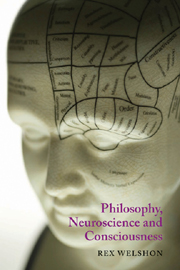Appendix - Functional neuroanatomy
Summary
THE BRAIN's COMPONENTS
The adult brain is a toaster-sized lump of cells enclosed by the cranium, 1,2001,500 cubic centimetres (cm3) in volume and weighing between 1,100 and 1,700 grams. In a living body, it looks like a great big, squishy, red walnut with fissures and wrinkles across its surface. Some of the brain's cells are contained entirely within the cranium, and others spread down the spinal column and from there into the periphery of the body. The central nervous system is composed of the brain and spinal cord; its partner, the peripheral nervous system, is the highway of nerves that feeds neural messages to the central nervous system. The brain is the top of the central nervous system. Everything above the spinal column up to and including pons and cerebellum is hindbrain. The short structure immediately above the pons is midbrain. Everything above midbrain is forebrain. Figure A.1 provides a side view, slightly exploded to show the regions.
Hindbrain (rhombencephalon)
The hindbrain is the terminus of the spinal column and transition to the midbrain and forebrain. The hindbrain contains three major structures – the medulla oblongata, the pons and the cerebellum – and a number of smaller structures.
The medulla oblongata (Latin for “oblong marrow”) is the lowest organ of the brain, below the pons and in front of the cerebellum. The medulla oblongata controls autonomic functions and serves as a relay station for a vast variety of signals going to and coming from the spinal cord, such as motor tracts, cardiac and respiratory signals, and signals directing muscular control of blood vessels. It is also the location of nerves that control coughing, gagging, swallowing, hiccupping and vomiting.
- Type
- Chapter
- Information
- Philosophy, Neuroscience and Consciousness , pp. 311 - 338Publisher: Acumen PublishingPrint publication year: 2010



